The best way to improve clay soils is to mix organic matter well with existing soils. Bark, sawdust, manure, leaf mold, compost, and peat moss are among the organic modifications commonly used to improve soil compaction. Let’s check out more information about growing vegetables in clay soil.
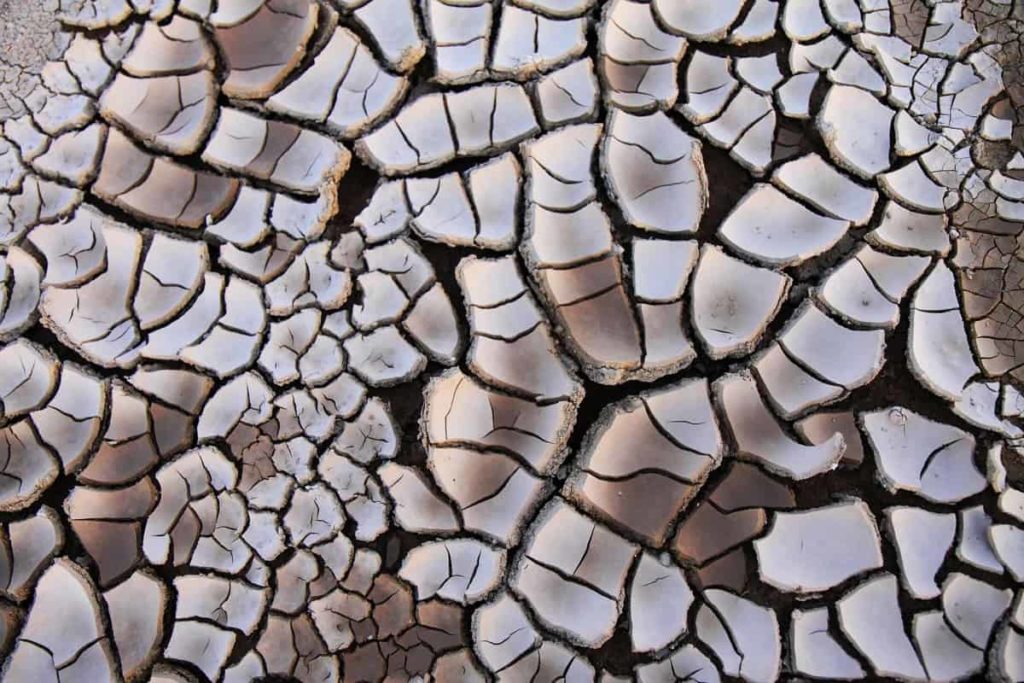
The clay soil is very hard, and you may need to make some modifications before starting a vegetable garden. Clay soils contain very fine mineral particles and do not contain much organic matter. The resulting soil is quite sticky because there is not much space between the mineral particles, and it does not come out well.
Growing vegetables in clay soil
Benefits of clay soil
Clay soil also has some advantages. Clay, due to its density, retains moisture well. It is more nutritious than other types of soil. It is because clay particles are negatively charged, which means they attract and hold positively charged particles, such as calcium, potassium, and magnesium.
- Compaction – Many clay soils are naturally more fertile than other soil types. The natural soil compound slows down leaching, which washes away many of the plant’s nutrients.
- Watering – You don’t have to water the clay often. It retains moisture more quickly than other types of soil, and you don’t need to add vermiculite or other water-retaining amendments.
- Fertilizing – You may not need to fertilize often. Because clay particles are very fine and stick together, fertilizer stays longer. However, this does not mean that you do not need to fertilize. You may have to do this less often. s
- Long-term root development – Once plant roots are established; the dense soil structure can be an excellent base for many plants. The roots will stay in place safely and may be partially protected from temperature changes.
Understanding clay soil
The most notable thing about clay is its density. Clay particles are smaller, many times smaller than sand grains, so wet clay feels smooth instead of being granular between your fingers. When small particles are coated with water, a slight pressure can cause them to stick together. If you can easily turn a handful of moist clay into a ball that fits well together, you probably have clay.
Another test is to mix the soil with water in a jar and then see how the sediment forms. The clay will settle into fine sedimentary layers that feel like gloppy mud, and it will take hours for the water to clear. Due to its excellent texture, the clay soil tends to pack down, limiting the amount of soil oxygen available to plant roots and microorganisms.
Here mulches can help, as they act as shock absorbers during heavy rains and host earthworms, which fill the air in the narrow soil with their continuous tunnel activity. When growing vegetables in clay soils, mulches reduce the natural mix and promote natural soil ventilation, increasing plant roots’ comfort.
Vegetables that grow well in clay soil
Clay has many benefits as it is an excellent source of nutrition, but these nutrients are useless without care and attention. Shallow root vegetables can easily withstand heavy soils. They also help break down heavy clay soils. Some well-grown vegetable crops include Lettuce, Chard, Snap Beans, Broccoli, Brussels Sprouts, and Cabbage. Some of the essential vegetables that can grow well in clay soil are;
Potatoes – Potato is a vegetable that can easily grow in many soils. So, you should add this organic matter to the relatively acidic clay soil.
In case you missed it: Rainy Season Vegetables in India
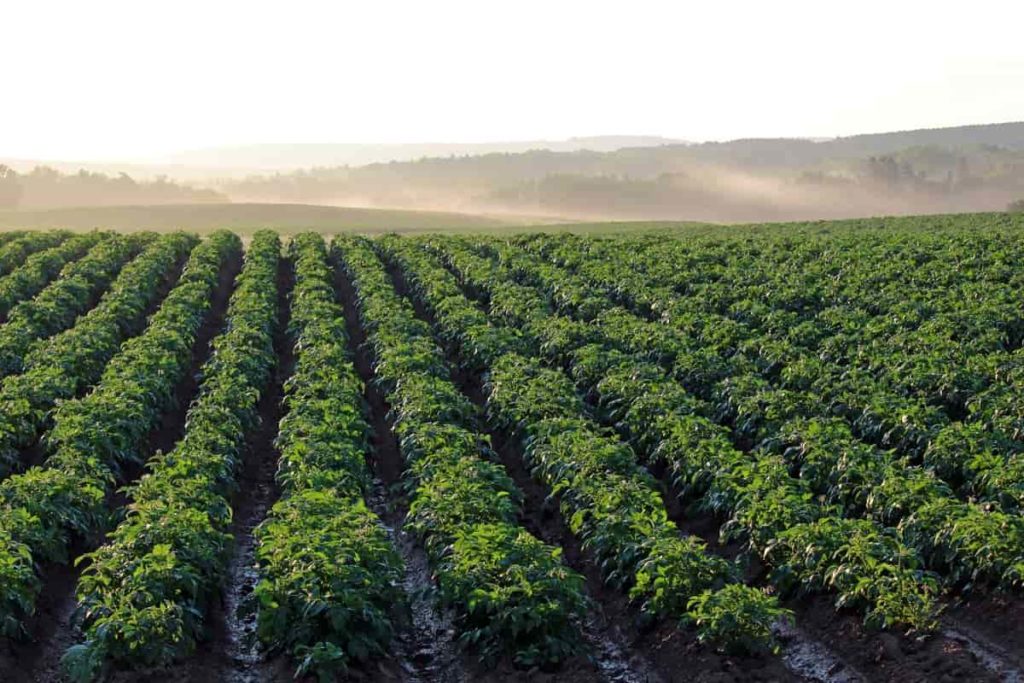
Cabbage – Clay soil is much cooler than other soils, so Cabbage is a good option for clay.
Cauliflower – You can grow your Cauliflower in clay soil as it has a high water retention capacity. It would help if you did not plant your Cauliflower in a land where other related crops like Cabbage, Kale, Brussels Sprouts, or Turnips have been growing for the last four years.
Peas – Peas grow well in loamy soils. They prefer soil pH of 6 to 7.5. They need to grow in both alkaline and acidic soils. Not much water is good for Peas in clay soils. Leave the roots of Pea plants in the soil after harvesting as they provide nitrogen and organic nutrients to the soil.
The best types of Cauliflower to grow in clay soil;
- Snow crown – It takes 50 days to mature, and it needs to be tied on top.
- Imperial – It takes 60 days to ripen.
- Cheddar – Harvesting takes 68 days. It is self-blanching; Therefore, there is no need to tie.
- Grafitti – Matures within 75 days and cleanses itself.
- Veronica Romanesco – It takes 80 days to mature and bleach yourself.
Pumpkins – Pumpkins are not so concerned about soil texture. However, they still need fertility. Therefore, apply a spray of well-rotted manure or compost on each hill while planting.
In case you missed it: Growing Vegetables Under Lights: Indoor, Led Lights, Artificial Lights For Beginners
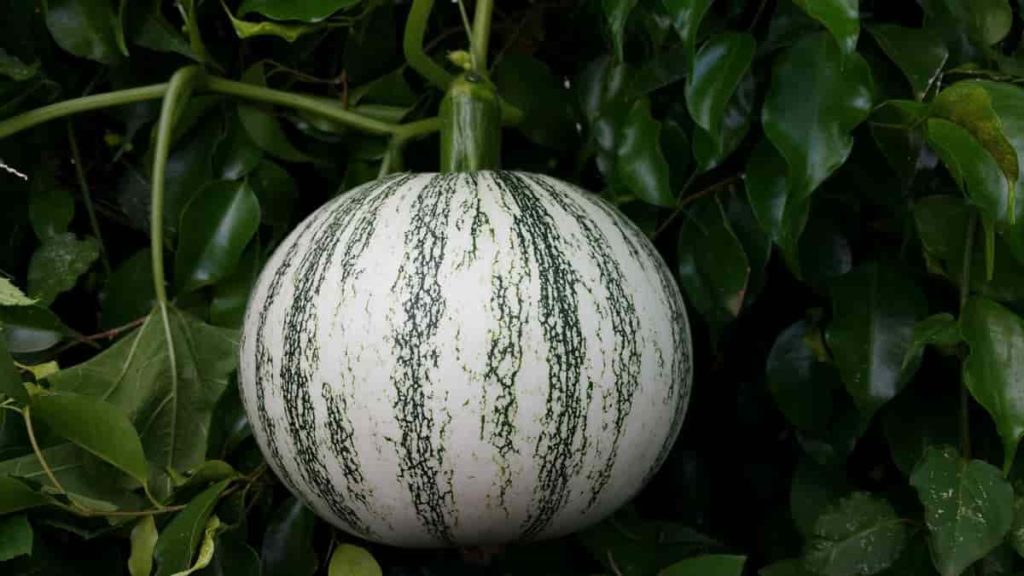
Brussels sprouts – It grows well, form strong heads in loamy soils, and like cool weather. For better yields, you should monitor soil pH and humidity.
Squash – Both winter and summer squash perform well in all clay soils. However, add decomposed manure or lots of manure to help drain.
Bulbs like Onions and Leeks – glow well in dry and fertile soil. Raised beds enhanced with more fertilizer are recommended. You can also add fish emulsion/compost tea to encourage rapid growth.
Bean – Bean plants do not need any special conditions for their growth. They can easily thrive in compact soil. It is essential to add fertilizer to improve the soil condition of your soil. Bean plants (Phaseolus vulgaris) are not picky when they are in their growing stage, and they grow in loamy soil, especially when modified with old manure.
Temperature is the key to the successful growth of different types of bean plants in clay soils. Beans need warm soil. Because clay warms more slowly than loam or sand, wait until the soil temperature to 60F before sowing bean seeds.
Swiss Chard – Grow Swiss Chard well in clay soil.
Kale – Kale is preferred over clay types (sand, silt, and clay). In the preparation of soil, add old manure and aged manure. Kale also does well in clay soils, especially for cold-tolerant varieties. To increase the air inside the soil, you can dig holes. It will also help if you feed the Kale with aged manure.
Carrots – If you grow Carrots in clay soil, you can’t find long, thick carrot stalks as it is difficult for them to penetrate the clay soil.
In case you missed it: How to Keep Monkeys Away from Plants, Garden, Vegetables, Fruits: Tips and Tricks
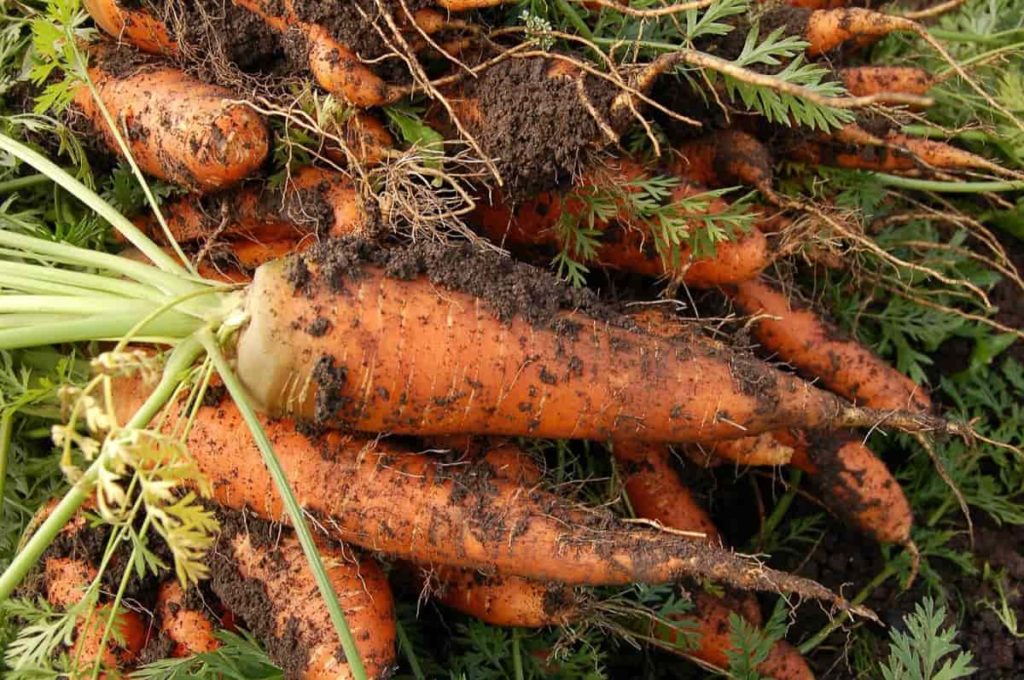
Tips to improve the quality of clay soil
With proper care, the clay soil can grow healthy vegetables. Your little effort can make the soil more friendly to vegetables. Firstly, you should work on soil aviation. Then add amendments to the soil.
Proper aeration for soil – This simple step can bring your stubborn clay soil life. Aerating means making small holes in the soil. These holes make it possible for your plant roots to get water and essential nutrients. Another way is to add some materials like sand or soil to the soil; they will help provide oxygen to your plants. But if you have a large development area, these materials will add to your costs.
Adding organic materials – After improving the soil texture, the next step is to add compost, manure, fish emulsion, and fertilizer. Most ingredients are readily available at home, such as fruit and vegetable peels, ground coffee, and boiling water. These organic substances provide your soil with all the essential nutrients. These materials help to create the soil fertility that most plants need.
Add organic compost – Waste and rough organic matter is an easy addition. These include substances such as garden compost, animal waste manure, bone compost, straw, chopped leaves, and dried organic matter. They further improve the quality of aviation by eliminating defects. Whenever you plant, you want to add some old fertilizer. It helps to improve soil fertility and brings germs into the soil, thus increasing the number of nutrients.
Mulching – Mulching is essential. Mulch will help you a lot in maintaining your sticky soil. Mulch is an excellent option if you want to maintain the moisture level in your soil. It will also help reduce weeds, a big problem for your healthy vegetable crop.
Add quality amendments – No matter what time of year, applying old fertilizer can be beneficial. The compost is full of plant matter which will help to break down soil particles. It’s also great for your plants in general and can help significantly improve their growth. Biochar is also another option. It has also gained popularity in agriculture and has begun to replace gypsum in many areas. Perlite helps block open passages for filtering water and keeps your soil well ventilated, which is suitable for breaking down plant substances such as compost.
How to amend clay soil?
It takes some time and patience to amend your soil but, in the end, it rewards you many times more. The first step is to add as much organic matter as possible and mix it into your existing soil as deeply as possible. Before starting, test the soil to cultivate organic matter simultaneously as lime, phosphorus, or whatever is suggested. Firstly, start using a tiller to loosen existing soil (if it is a large area). After that, spread about 2 inches of compost on the field soil and work in it. Repeat this process twice more.
Working or walking on wet mud can severely damage the structure you are trying to improve. It will take more time and care to work around existing plants. Autumn is the best time to do this as the weather is usually drier than springtime. Another reason you should do this in the fall is that the cooler temperatures are pleasant to work in and become an annual part of putting the garden to bed for the winter. Spread a few inches of compost between the plants and use a narrow jump to convert the manure into the soil.
Repeat this at least once and plant it to become part of your routine. Always work that you are walking backward and not on your freshly turned soil. In the long run, regular use of manure, fertilizers, and other organic matter will improve your soil texture, fertility, and overall health. It will be easier to uproot your plants. Choose plants that are naturally suitable for growing in the soil. It’s always better to work with what you have than try to change it completely.
Preparing clay soil for planting favorite vegetables
- Find out if your soil is clay – If you could squeeze a handful of soil together, make clay figures, and sell them, you probably have clay soil.
- Add organic matter – This will require some consideration, but one way you can start preparing the soil for planting is to add a few inches of organic matter to the soil and add it to the garden thorns or Use with a similar garden tool. Grass clippings, straw, or cut leaves all work well for this, but it will take two to three months for them to break down and form a soil in which vegetables are easy to grow.
- Add compost – If you have compost ready, you can extend the preparation time. Like organic matter, put a two- or three-inch layer of compost in your soil and work it with a garden fork.
- Plant vegetables that grow well in the clay. Even if you add organic matter or fertilizer, you can have more success in gardening if you plant shallow-rooted vegetables, such as Leaf Lettuce, Beans, or Squash.
- Plant cover crops – If you can wait for the season to come to your garden, one method to prepare the soil for planting is to plant cover crops to help break up the soil. Some gardeners even recommend fava beans as a core crop, which will give you a delicious extra benefit.
- Add the mulch – A thick layer of mulch will help prevent the soil from ripening in the sun, and it will help loosen the soil as it breaks, and if you step on it will prevent the soil from becoming more compact.
In case you missed it: Fast Growing Vegetables, Tips, Techniques
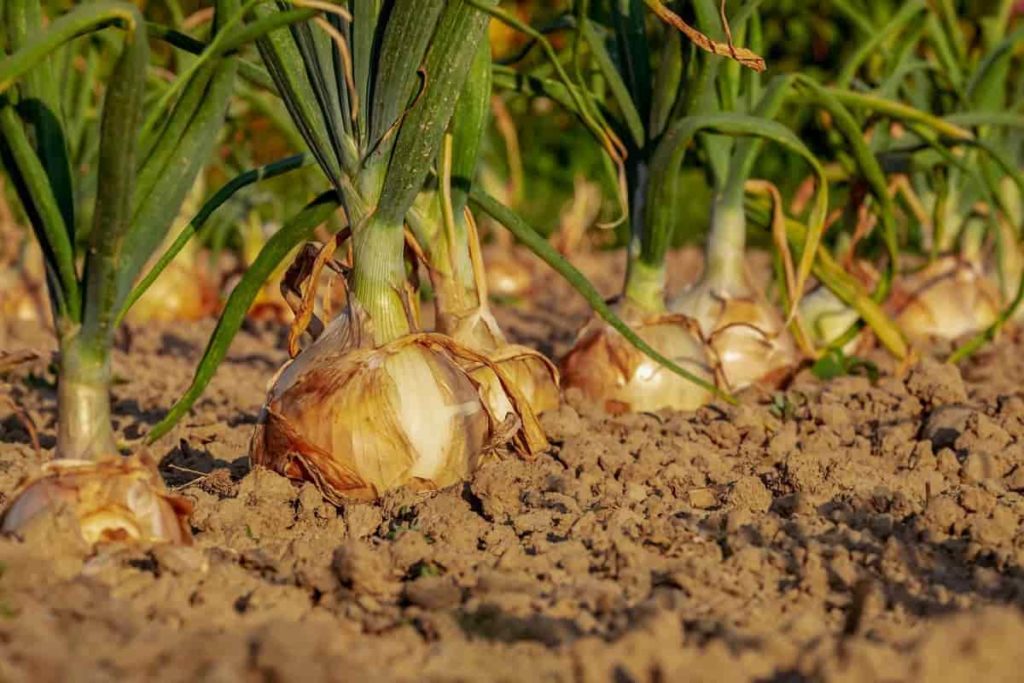
Frequently asked questions about clay soil (FAQ)
Will the Onions grow in the clay soil?
Onions grow best in well-drained and cultivated sandy, loam soils. For clay, work in compost to loosen compaction. Heavy soil does not allow onion bulbs to grow to their full potential.
Will the cucumbers grow in the clay soil?
Once established, Cucumbers grow in various soils – from dense clay to light sandy loam – although all soils should be well-drained. It is good to wait for hot weather to plant cucumbers as they are sensitive to soil temperature.
Which fertilizer is best for loamy soil?
The best fertilizer for clay soils is only organic fertilizer or manure. Clay soil lacks organic matter, which helps drainage and loosens the soil; use fertilizer to improve garden soil.
How to improve the drainage of clay soil?
Adding organic matter to the soil will help increase drainage. Just add 1-2 inches of fertilizer and put it in the soil. Adding more organic matter will help in very heavy clay soils.
In case you missed it: Best Vegetables That Grow In Containers
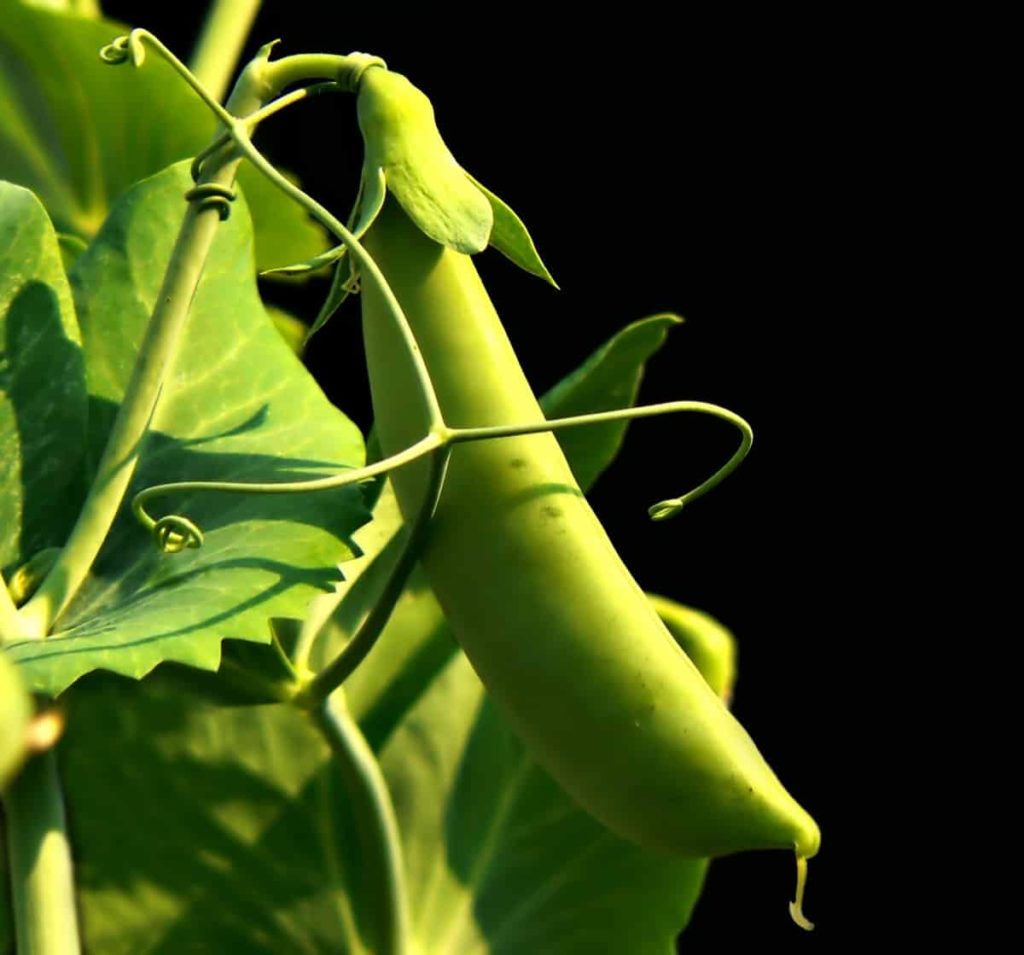
Can Carrots grow in clay soil?
Carrots like soil with a pH of 5.5 to 6.5. Prepare the site by tailing to a depth of 10 inches. If your garden is made of hard, clay soil, Wester field recommends growing carrots at least 8 inches to 12 inches high in containers or raised beds.
Is compost good for clay soil?
Compost helps break down compacted soil that holds nutrients, water, and air together and prevents them from moving. Compost helps guide the particles that make up the soil into integrated sediment that distributes these nutrients evenly.
- Economical Aquaculture: A Guide to Low-Budget Fish Farming
- 15 Common Planting Errors That Can Doom Your Fruit Trees
- How to Make Houseplants Bushy: Effective Tips and Ideas
- Innovative Strategies for Boosting Coconut Pollination and Yield
- Pollination Strategies for Maximum Pumpkin Yield
- The Complete Guide to Chicken Fattening: Strategies for Maximum Growth
- Natural Solutions for Tulip Problems: 100% Effective Remedies for Leaf and Bulb-Related Issues
- Revolutionizing Citrus Preservation: Towards a Healthier, Greener Future
- Natural Solutions for Peony Leaf and Flower Problems: 100% Effective Remedies
- Maximizing Profits with Avocado Contract Farming in India: A Comprehensive Guide
- Natural Solutions for Hydrangea Problems: 100% Effective Remedies for Leaf and Flowers
- The Ultimate Guide to Choosing the Perfect Foliage Friend: Bringing Life Indoors
- From Sunlight to Sustainability: 15 Ways to Use Solar Technology in Agriculture
- The Ultimate Guide to Dong Tao Chicken: Exploring from History to Raising
- The Eco-Friendly Makeover: How to Convert Your Unused Swimming Pool into a Fish Pond
- Mastering the Art of Delaware Chicken Farming: Essentials for Healthy Backyard Flocks
- 20 Best Homemade Fertilizers for Money Plant: DIY Recipes and Application Methods
- How to Craft a Comprehensive Free-Range Chicken Farming Business Plan
- Brighten Your Flock: Raising Easter Egger Chickens for Beauty and Bounty
- How to Optimize Your Poultry Egg Farm Business Plan with These Strategies
- Subsidy for Spirulina Cultivation: How Indian Government Schemes Encouraging Spirulina Farmers
- Ultimate Guide to Raising Dominique Chickens: Breeding, Feeding, Egg-Production, and Care
- Mastering the Art of Raising Jersey Giant Chickens: Care, Feeding, and More
- Ultimate Guide to Raising Legbar Chickens: Breeding, Farming Practices, Diet, Egg-Production
- How to Raise Welsummer Chickens: A Comprehensive Guide for Beginners
- How to Protect Indoor Plants in Winter: A Comprehensive Guide
- Ultimate Guide to Grow Bag Gardening: Tips, Tricks, and Planting Ideas for Urban Gardeners
- Guide to Lotus Cultivation: How to Propagate, Plant, Grow, Care, Cost, and Profit
- Agriculture Drone Subsidy Scheme: Government Kisan Subsidy, License, and How to Apply Online
- Ultimate Guide to Raising Araucana Chickens: Breed Profile, Farming Economics, Diet, and Care
- Bringing Hydroponics to Classroom: Importance, Benefits of Learning for School Students
- Ultimate Guide to Raising Polish Chickens: Breed Profile, Farming Economics, Diet, and Care
- Ultimate Guide to Raising Australorp Chickens: Profile, Farming Economics, Egg Production, Diet, and Care
- Silkie Chicken Farming: Raising Practices, Varieties, Egg Production, Diet, and Care
- Sussex Chicken Farming: Raising Practices, Varieties, Egg Production, Diet and Care
- Homemade Feed Formulations for Livestock: Discover Cost-effective Starter to Finisher Feed Recipes